CSU sociologist co-authors book on how Hurricane Katrina affected kids
by Jeff Dodge | August 16, 2015 2:48 PM
Video by filmmaker Maria Do of Louisiana State University
A couple of weeks before Hurricane Katrina hit the Gulf Coast on Aug. 29, 2005, sociologists Lori Peek and Alice Fothergill were talking about doing a joint research project on the subject they had studied together in graduate school and had worked on independently since then: social vulnerability in disaster.
The opportunity to start up such a study came sooner than they expected. They went to the New Orleans area about a month after the storm made landfall and began a seven-year project to monitor how the disaster affected children.
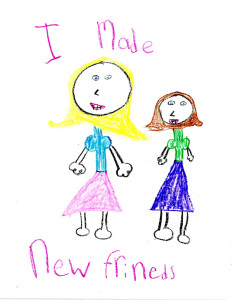 [1]Now Peek, associate professor of sociology at Colorado State University, and Fothergill, associate professor of sociology at the University of Vermont, have finished Children of Katrina, a book that explores how children and youth responded to the hurricane. It is one of four books being published this summer by the University of Texas Press as part of the “Katrina Bookshelf” series conceived by distinguished sociologist and series editor Kai Erikson in honor of the 10th anniversary of the storm. Peek is co-editor of another book, Displaced: Life in the Katrina Diaspora, which appeared on the Bookshelf in 2012.
[1]Now Peek, associate professor of sociology at Colorado State University, and Fothergill, associate professor of sociology at the University of Vermont, have finished Children of Katrina, a book that explores how children and youth responded to the hurricane. It is one of four books being published this summer by the University of Texas Press as part of the “Katrina Bookshelf” series conceived by distinguished sociologist and series editor Kai Erikson in honor of the 10th anniversary of the storm. Peek is co-editor of another book, Displaced: Life in the Katrina Diaspora, which appeared on the Bookshelf in 2012.
700 children
Children of Katrina draws on research that involved about 700 children between the ages of 3 and 18 as well as 100 adults. The authors focus primarily on 25 young people who they followed intensively over the seven years after the storm. In the book, they tell the stories of seven individual children who exemplify the varied experiences of the larger group.
“We think it’s the longest qualitative study of children after a disaster that’s ever been done,” Peek said. “We watched these children grow up and change over time. It was incredible.”
Soon after starting their observations, interviews and focus groups, Fothergill and Peek realized they would have to get creative about getting the youngest survivors of Katrina to open up about how they felt. So they gave them paper and crayons and encouraged them to draw their answers to questions about what Katrina looked like, or what good came out of it, for example. The researchers also made flash cards labeled with topics they wanted to discuss, placed them in front of the children, and let them take turns picking the subject.
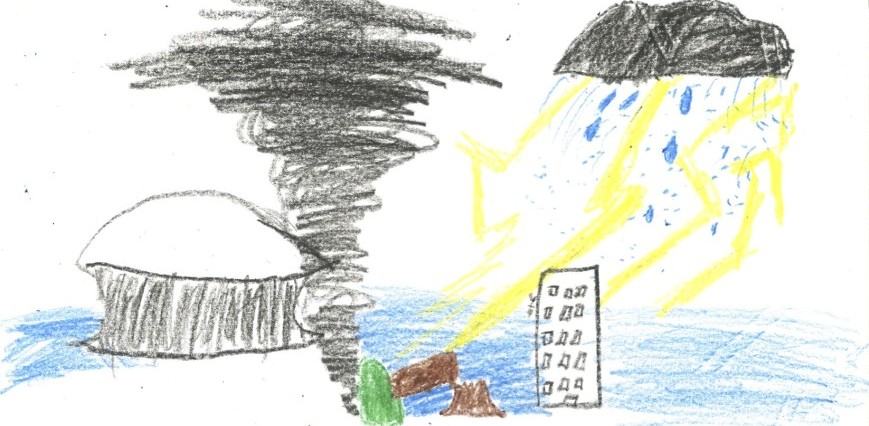
When children experience upheaval and trauma, adults often view them as either vulnerable and helpless or resilient and able to “bounce back.” But Peek and Fothergill found a more complex reality. They found that children followed one of three different trajectories after the disaster: “declining,” “finding equilibrium” or “fluctuating.”
Those identified as “declining” experienced an accumulation of disadvantages and a downward spiral. Children in the “finding equilibrium” group saw initial hardships after Katrina but had the support and resources to regain stability. And those categorized as “fluctuating” were up and down, on a roller coaster of uncertainty.
Often, Peek said, she and Fothergill found that children in the latter group had an “anchor,” or person in their lives who helped provide stability, while other areas of their lives kept going awry.
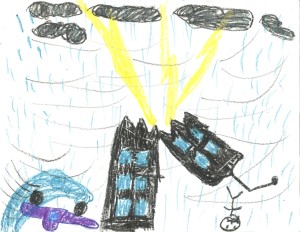 [2]Those in the finding equilibrium group tended to have more wealth and other resources, although some impoverished children recovered relatively quickly as well, thanks to strong advocates and highly functioning institutions in their lives.
[2]Those in the finding equilibrium group tended to have more wealth and other resources, although some impoverished children recovered relatively quickly as well, thanks to strong advocates and highly functioning institutions in their lives.
“But all of the children we studied suffered from Katrina,” Fothergill said. “It was the first time a major American city was entirely emptied of life, so all of the children were displaced for some period of time.”
Kids’ contributions
Still, when they visited shelters, they also saw young people rallying to help themselves, other children and adults. Peek said they witnessed teen boys organizing basketball games for younger kids and girls setting up homework tables. Teens from a Baton Rouge church threw a birthday party for younger children in shelters who couldn’t celebrate properly on their big day.
Children often told the researchers they were participating in the study because it felt good to be able to talk about what happened, and they wanted their stories to help others.
“The children knew what it felt like to lose everything, so they thought that would make them able to assist other children who have similar experiences in future disasters,” Fothergill said.
As might be expected, when asked about the most difficult parts of the experience, many children mentioned losing their homes and belongings and being far from some family members. But another struggle that is often overlooked seems to have been the interruption of interpersonal relations as they were separated from friends, boyfriends and girlfriends — and often sent to new schools where they knew no one.
“Children’s friendships are an important aspect of their lives and often downplayed,” Peek said. “We wanted to make sure to pay attention to all parts of their lives – including the role friends and friendship played in their post-disaster recovery.”
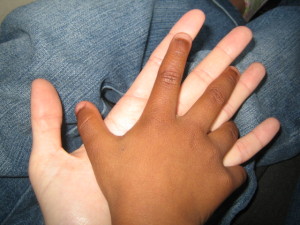 [3]The two authors’ work demonstrates that outcomes were often worse for children who were vulnerable and living in crisis before the storm. Fothergill and Peek outline what kinds of assistance children need during emergency response and recovery periods, as well as the individual, familial, social and structural factors that aid or hinder children in getting that support.
[3]The two authors’ work demonstrates that outcomes were often worse for children who were vulnerable and living in crisis before the storm. Fothergill and Peek outline what kinds of assistance children need during emergency response and recovery periods, as well as the individual, familial, social and structural factors that aid or hinder children in getting that support.
Voices
Peek and Fothergill have been asked whether they could have gotten the same information if they had only interviewed the parents. The answer is no.
“There were things we learned from the children that we wouldn’t have discovered without interviewing them,” Peek said, adding that children and teens often see their parents suffering and withhold or downplay their own troubles to avoid being an additional burden. “We found that some children protected the adults.”
They dedicated the book to the late William Anderson, a prominent sociologist who had just called for more research in this field of study before the hurricane struck.
“He really inspired us to think not just about children’s vulnerability, but also about their potential and their capacities,” Peek said.
Fothergill agreed.
“He inspired us to start this project,” she said. “The children we met after Katrina inspired us to keep it going.”
Katherine Browne, a CSU anthropology professor, also wrote one of the books in the Katrina Bookshelf series: Standing in the Need: Culture, Comfort and Coming Home after Katrina[4]. A launch party for both books will be held at Avogadro’s Number, 605 S. Mason St. in Fort Collins, from 5 to 7 p.m. on Sept. 10. The event will feature live music by the Hazel Miller Band.
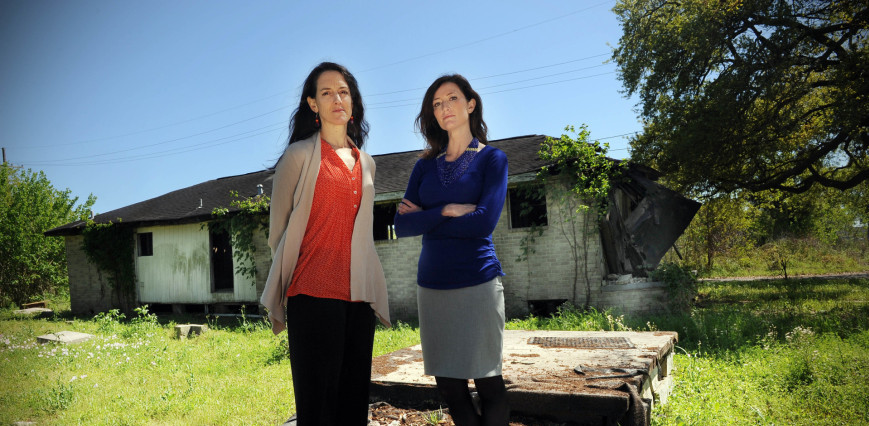
Fothergill, left, and Peek in the Ninth Ward. Photo by Cheryl Gerber
Media assets
Photos (Click on any image above to enlarge)
Broadcast-quality video[5]
- [Image]: http://source.colostate.edu/wp-content/uploads/2015/07/Katrina-drawing.jpg
- [Image]: http://source.colostate.edu/wp-content/uploads/2015/07/KatrinaKidsArt2.jpg
- [Image]: http://source.colostate.edu/wp-content/uploads/2015/07/New-Orleans-2009-058.jpg
- Standing in the Need: Culture, Comfort and Coming Home after Katrina: http://col.st/VXqqE
- video: https://vimeo.com/135287426
Source URL: https://source.colostate.edu/csu-sociologist-co-authors-book-on-how-hurricane-katrina-affected-kids/
Copyright ©2024 SOURCE unless otherwise noted.